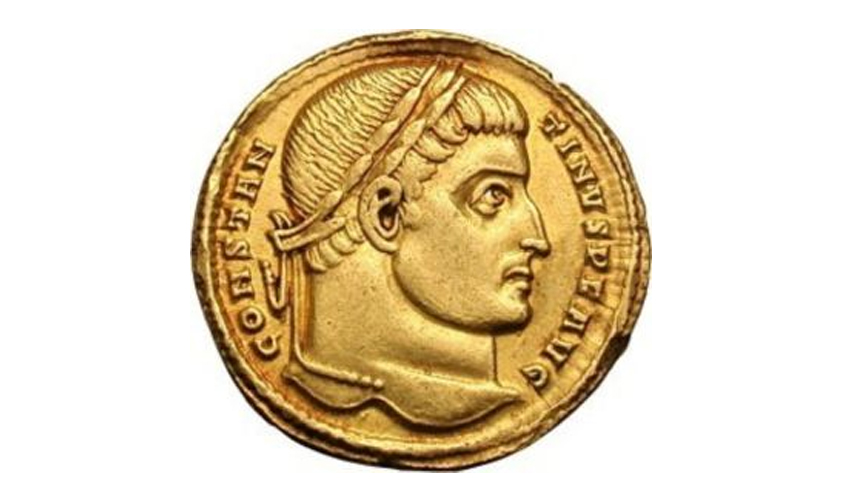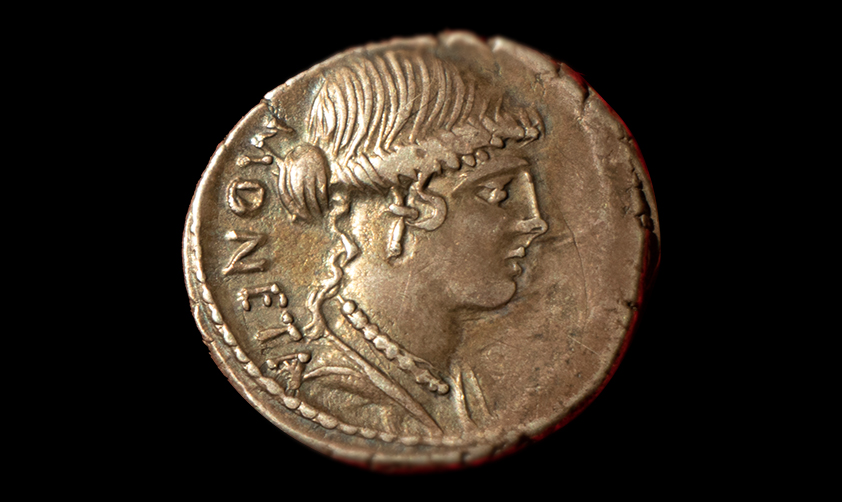In ancient Roman times, the Latin word moneta indicated the place where metal coins were produced. This use of the term is still to be found today in several European countries: in England, coins are struck by the Royal Mint, in France by the Monnaie de Paris, in Germany by the Münze Deutschland. Italy is different: coins here are, in fact, produced at a place called the Zecca dello Stato.
Italians will often use the phrase 'nuovo di zecca' for something that's brand new, just like a beautiful newly minted coin (in mint condition!). Children probably pick up this expression before they even come to know what the State Mint ('Zecca') is.
So where does the word Zecca come from? And why is it that Italian, which should be the most direct heir of Latin, only uses the word moneta for individual minted metal coins or as an abstract noun for all available forms of liquidity (like 'money')?
Let's not forget that Italy has a very complex history that cannot be reduced to the Roman era alone, and there are numerous architectural, culinary, artistic and even linguistic legacies from the peoples who ruled or traversed the peninsula at various times. One quite important example is the Arab domination in Sicily, which began in 827 ce and ended in 1061 with the Norman conquest of Palermo. The word zecca, for 'mint', actually comes from the Arabic sikka, meaning 'punch', the instrument used for coining, and the meaning was later extended to the minted coin itself. To this day, Dar As-Sikkah or 'House of the Coin' is still the name of the mint of the Kingdom of Morocco.
The Arab-Norman mints of southern Italy produced fascinating coins such as the gold tarì, which has a Christian design on one side and an Arab-Muslim design on the other. The term zecca (old variant spelling: zeccha) survived through the Swabian and Angevin domination and later spread to central and northern Italy, gradually replacing the word moneta over the 13th and 14th centuries. In Tuscany, moneta continued to coexist with zeccha, as the word for the mint, until the 14th century, but the latter eventually took over.
Starting in the late Middle Ages, the mints of some Italian cities and states became very famous because of the prestige of the coins that were struck there. The Maritime Republics of Genoa and Venice issued genovini and ducats, which were probably among the most well-known, as was the Republic of Florence's gold florin, which was to remain the most prestigious currency in Europe for a long time. These mints led the revival of gold coinage in Western Europe, thanks to the commercial and financial vitality of their cities. In the 16th century, the Venetian gold ducat began to be called the zecchino because of the rising price of the newly minted ('nuovo di zecca') ducat. From then on, up until the 19th century, many Italian states adopted the term zecchino to refer to gold coins that matched the quality of the Venetian coin. In 1883, Carlo Collodi published The Adventures of Pinocchio, and the handful of gold coins which the naive puppet buries because the thieving Cat and Fox tell him they will grow into a 'zecchini tree'.
The Italian mint is now part of the Istituto Poligrafico e Zecca dello Stato (IPZS), and is a company owned by the Ministry of Economy and Finance, which produces the euro coins we use every day and also, through the Poligrafico, prints banknotes. The coins are minted by the IPZS on behalf of the Ministry, which is the issuing body, and distributes them throughout the country with the help of Banca d'Italia. Euro coins are a dual expression of European and Italian identity, as they have a side that is the same for all Eurozone countries and a side representing the monuments, personalities and works of the culture and tradition of individual countries. Damaged coins can be handed in at the local branches of Banca d'Italia, which will exchange them and forward them to the IPZS. The production plant is in Rome, in the Alberone area, but from 1911 to 1999 it was located in Via Principe Umberto, in the Esquilino district. Before then, from when the Papal States and Rome were annexed to Italy in 1870, the kingdom of Italy's Regia Zecca had instead used the site of the old Papal Mint.
It has been a long time since Florentine, Venetian and Genoese coins were appreciated and imitated throughout Europe, because of both the prestige of their issuers and their intrinsic quality. However, Italy can still boast the highest levels of excellence in this field: the Scuola dell'Arte della Medaglia dell'Istituto Poligrafico e Zecca dello Stato in Rome is unique for the advanced training it provides. Founded in 1907 as part of the Royal Mint, it still trains and specializes students in learning and perfecting ancient coinage and engraving techniques as well as teaching the most innovative design methodologies, creating professionals who are highly sought-after in the art world too. The IPZS also has a Mint Museum in Rome (on the Via Salaria), which is open to the general public and has not only coins and medals on display, but also machinery, both ancient and modern, and illustrations of the production techniques. The Zecca dello Stato is the custodian of a part of our history and also of its future: we should remember this whenever we take change out of our pockets!









